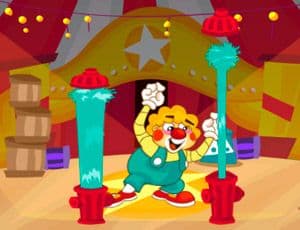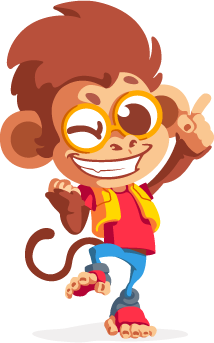Escola Games | Jogos Educativos
https://www.escolagames.com.br
Teacher's support sheet

Magic Circus
The magic circus has lots of fun activities! Clowns, magicians, elephants, monkeys, and bears perform in the circus ring. This mathematics educational game works with the concepts of thin and fat, tall and short, wide and narrow, and big and small.

Teacher's tips
Level of Education: Elementary School - Preschool
Age: 5 to 7 years old
Subjects: Mathematics
Kids from preschool must participate in situations where they can solve a problem using units of measurement and give meaning to social practice. Kids can give sense to mathematics and build solid knowledge to work with it by solving problems involving size, width, height, and position. [FIM-DICA]
Learner outcomes
To reinforce the content of the following concepts: big/small, tall/short, narrow/wide, thin/thick, fat/skinny, slow/fast, behind of/in front of, facing toward/facing away;
To identify units of measurement;
To compare different units of measurement;
To use different strategies to recognize numbers in situations that involve measurements;
To solve problem-situation involving the relations between units of measurement;
To establish connections between units of measurement working with simple estimative;
To stimulate logical thinking;
To relate images with two opposite concepts;
To compare and highlight the difference between the images by looking at their size, position, thickness, height, speed, and width.
To improve the ability of visual discrimination.
Teachers' goals
To reinforce the following concepts: big/small, tall/short, narrow/wide, thin/thick, fat/skinny, slow/fast, behind of/in front of, facing toward/facing away;
To present students with a game that will encourage them to connect these topics with mathematics;
To offer situations so students use the concepts they already know both inside the classroom and in their daily lives.
Suggestions of approaches for the teacher
(Approach 1) The teacher can hand students a chart with the concepts. Kids must complete it by drawing examples. Example: Instead of a tall and a short monkey, students can draw an adult and a kid, a giraffe and a dog, and a building and a house.
(Approach 2) Students should also play different games to reinforce the content during classes. The teacher can form groups for students to play memory games and find the opposites:
Tall/short, thick/thin, deep/shallow, full/empty, heavy/light, far/close, not much/too much, fast/slow, small/big, and so on.
These mathematics concepts are in their daily lives, and teachers must work with them through playful activities and games.
(Approach 3) The teacher can ask students to take objects to the classroom. Then students should separate them by categories, such as big, small, narrow, broad, and so on.
(Approach 4) The teacher can organize a day to ask students to create different sizes of objects with play dough.
(Approach 5) Take a measuring tape and a rule to the class to measure different objects with students.
(Approach 6) Define, with students, different places to keep distinct size toys.
(Approach 7) Work with geometric shapes of different sizes and colors.
(Approach 8) Analyze the figures, share ideas with colleagues, and then separate them by color and size.
(Approach 9) The teacher can separate students by their height. Then, find different characteristics, such as the tallest and smallest with dark hair, and so on.
(Approach 10) Ask students to identify the pictures using the symbols less than (<) and greater than (>).
(Approach 11) Separate objects with different sizes and dimensions. Then, ask students to form a circle and separate them into categories.
More about the content
The way the teacher divides students during activities is a fundamental aspect that promotes interaction among students, besides the circulation of information and the development of their knowledge. So, divide students into pairs or groups. During the game, they must take turns clicking on the images. While one student uses the mouse, their coworkers must help them find the correct answers. Another game with this theme is "The largest and the smallest of the jungle" which works with different sizes. That is why they are such an important topic: they enable the integration among the various subjects: numeration systems, operations, measurements, space, and shapes. Although some aspects are complex, the need for social context requires that schools explore the topic since preschool. It is up to the teacher to select proposals, materials, and activities, all according to students' level.
